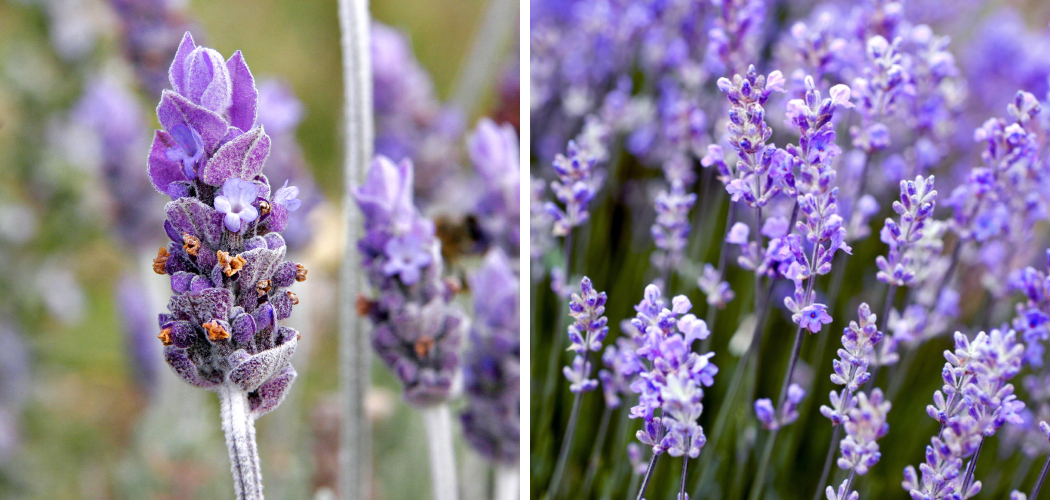To make lavender bloom, provide it with well-drained soil, full sun exposure, regular pruning, and proper watering. Additionally, ensuring proper air circulation and avoiding excessive fertilizer can also help promote blooming.
By following these steps, you can encourage your lavender plant to bloom and enjoy its fragrant and beautiful flowers in your garden.

Understanding The Basics Of Lavender Blooming
Understanding the basics of lavender blooming is essential for proper lavender care. Choosing the right lavender variety is crucial in ensuring a successful blooming process. Proper lavender care involves providing the right amount of sunlight, well-draining soil, and adequate water.
Pruning is also important to stimulate new growth and encourage blooming. Additionally, regular fertilization with a balanced organic fertilizer helps promote healthy growth and abundant blooms. It is also important to remove any weeds or competing plants around the lavender to prevent nutrient competition.
By following these simple guidelines, you can ensure that your lavender plants bloom beautifully and fill your garden with their delightful fragrance.
How to Make Lavender Bloom: Step by Step Guide
Creating The Ideal Growing Conditions
To make lavender bloom, it is crucial to create the ideal growing conditions. The first step is to ensure the plants receive the right amount of sunlight, as lavender thrives in full sun. In terms of temperature, lavender prefers hot and dry climates, so it is essential to provide a warm environment for optimal blooming.
Another important factor is the soil type and pH levels; lavender prefers well-draining soil with a pH level between 6. 5 and 7. 5. This will ensure proper nutrient uptake and prevent waterlogging. Lastly, adequate drainage is vital to prevent root rot and maintain plant health.
By following these guidelines, you can create an ideal environment for lavender blooming.
Pruning And Maintenance For Optimal Blooming
Pruning and shaping lavender is essential for enhancing its blooming. Trimming the plant helps in maintaining its shape and promoting better flower production. Removing spent flowers is crucial as it encourages the growth of new blooms. This task can be done by cutting or snapping off the faded flowers just below the base.
Fertilization is another important step in the maintenance of lavender. Using a balanced, slow-release fertilizer can provide the necessary nutrients for optimal growth. It is best to follow the instructions on the fertilizer package to ensure proper application. Additionally, regular maintenance practices such as watering and weed control should be implemented.
By following these pruning and maintenance techniques, you can help your lavender plant bloom beautifully.
Supporting Blooming With Watering Techniques
Watering frequency and timing play vital roles in supporting lavender blooms. Overwatering can lead to root rot, so it’s crucial to avoid excessive irrigation. By using proper irrigation tools and techniques, you can ensure that your lavender plants receive the right amount of water.
It’s important to strike a balance, watering when the soil feels dry without saturating it. This will prevent overhydration and promote healthy root development. Additionally, the timing of watering is crucial. Morning is the ideal time, as it allows the plant to dry before nighttime, reducing the risk of diseases.
Watering at the base of the plant rather than from above also prevents unnecessary dampness on the foliage. By following these watering techniques, you can help your lavender plants bloom beautifully.
Addressing Common Issues Affecting Blooming
Blooming lavender can be impacted by various issues, including pests and diseases. Identifying these problems is crucial. Additionally, using natural and organic solutions can effectively tackle common issues. However, there may be other barriers hindering lavender’s blooming process. By troubleshooting these obstacles, you can support lavender plants in reaching their full blooming potential.
So, whether it’s dealing with pests, diseases, or other challenges, addressing them promptly and using appropriate remedies can help you make lavender bloom beautifully in your garden.
Harvesting And Enjoying Lavender Blooms
Harvesting lavender blooms requires knowledge of when and how to gather the flowers. Knowing the ideal time to harvest ensures optimal fragrance and color. Once harvested, drying and storing methods must be employed to preserve the blooms. Hanging the flowers upside down in a cool, dark location is one common technique.
This allows for natural air circulation, maintaining the lavender’s quality over time. Stored properly, lavender blooms can be used in various crafts and culinary delights. From potpourri to infused oils, there are countless creative ways to incorporate the fragrant flowers into your daily life.
So, next time you see lavender in full bloom, seize the opportunity to enjoy its beauty in multiple dimensions.
Frequently Asked Questions On How To Make Lavender Bloom
Why Isn’T My Lavender Flowering?
Lavender may not flower due to lack of sunlight, overwatering, poor soil, or improper pruning.
How Long Does It Take For Lavender To Flower?
Lavender typically takes 2-3 years to flower after being planted.
How Do You Stimulate Lavender Growth?
To stimulate lavender growth, provide well-draining soil, full sunlight, regular watering, and occasional pruning.
Does Deadheading Lavender Produce More Flowers?
Yes, deadheading lavender promotes more flowers by encouraging new growth and prolonging the blooming season.
Conclusion
To bring out the vibrant beauty of lavender, it is essential to follow a few key techniques. Regular pruning encourages the growth of new shoots and helps maintain the plant’s shape. Be sure to choose a sunny location for your lavender to thrive, as it loves basking in the warmth.
Watering lavender sparingly, making sure the soil is well-drained, promotes a healthier root system. Using a balanced organic fertilizer during the growing season provides the necessary nutrients for robust and abundant blooms. Lastly, remember to harvest your lavender when the flowers are in full bloom, employing simple techniques like cutting or drying.
By implementing these strategies, you can enjoy a garden filled with aromatic lavender blooms. So, don’t wait any longer, put these tips into practice and experience the delightful beauty and fragrance that lavender brings to your garden.

